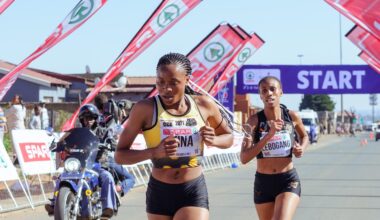Returning to Play After a Chronic Sports Injury: Guidelines
Returning to play after suffering a chronic sports injury can be a daunting process. It requires careful planning and consideration to ensure athletes can perform at their best without risking further injury. One of the fundamental steps is to consult with a sports medicine specialist who understands the nature of the injury. They can provide tailored rehabilitation programs and assessments. A crucial aspect of recovery is to identify the physiological and psychological readiness of the athlete. Athletes must adhere to a gradual progression of intensity in their training regimens, starting with low-impact exercises and transitioning to more strenuous activities over time. Each training session should be monitored to evaluate the athlete’s response. Furthermore, maintaining open communication with coaches and trainers can assist in managing expectations during the recovery phase. Additionally, understanding the specific type of chronic injury can guide rehabilitation protocols, incorporating flexibility and strengthening exercises. It also helps in setting realistic timelines for returning to play alongside effective injury prevention strategies to minimize future risks. Following these guidelines enables athletes to navigate their path to recovery safely and effectively.
Importance of Gradual Return
The importance of a gradual return to play cannot be overstated. This process is critical for several reasons, including giving the body time to adapt to increased physical demands. Athletes who rush back into their full-performance level may experience setbacks and aggravate their injuries, leading to longer recovery times. A well-structured gradual return plan involves monitoring pain, mobility, and functional tests at each stage. Careful progressions often include restoring range of motion, increasing strength, and improving cardiovascular fitness. Athletes might start with non-weight-bearing activities, such as swimming or cycling, before progressing to sport-specific drills and eventually to full practice sessions with their teams. Additionally, each step should include evaluating mental readiness, as psychological factors can significantly influence performance. Working closely with a physical therapist can provide valuable insights into what modifications are necessary based on an athlete’s unique situation. Listening to the body and heeding warning signs like sharp pain or excessive fatigue is also essential. By prioritizing a methodical approach to returning to play, athletes can enhance their chances of a successful and sustainable comeback.
Incorporating preventative measures during the rehabilitation phase is vital for preventing re-injury. This involves implementing a comprehensive conditioning program that focuses on strength stabilization, flexibility, and coordination. Athletes need targeted exercises aimed at the muscles and joints affected by the previous injury. This preventative strategy typically includes elements like dynamic stretching routines before training sessions and cooldown techniques afterward. Strength training should be carefully gauged, gradually increasing in intensity and complexity as comfort levels rise. Functional training that mimics the athlete’s sport-specific movements is equally beneficial. Additionally, cross-training with low-impact activities, such as dance or yoga, can enhance overall athletic performance and maintain motivation during recovery phases. Regular assessments with sports medicine professionals provide quantifiable benchmarks for improving strength and agility. Nutrition also plays a critical role during recovery; adequate protein, vitamins, and hydration support tissue repair and performance. Athletes should be educated about their bodies’ responses to varying workouts and nutrition plans. Developing these habits can create a sturdy foundation for athletes, enabling them to increase their resilience against future injuries confidently.
Mental Health Considerations
The mental health aspect of recovering from a chronic sports injury is often overlooked yet remains critically important. Athletes may experience anxiety or depression during prolonged rehabilitation periods, making it essential to address these emotional challenges. Monitoring psychological well-being should be part of the recovery framework, as the mental state directly influences physical performance. Engaging with sports psychologists experienced in dealing with athletes can aid in developing effective coping strategies. Methods could include visualization exercises, relaxation techniques, and goal-setting to foster a positive recovery mindset. Peer support from teammates, coaches, or other recovering athletes can help maintain motivation and encourage emotional healing. Sharing experiences promotes a sense of community and understanding among injured athletes. Journaling can also be a helpful tool, allowing athletes to express feelings about their recovery processes. Encouraging athletes to celebrate small victories during their rehabilitation will strengthen their overall mental resilience. Creating a balanced focus on mental and physical health lays the groundwork for a successful return to sport. Maintaining awareness of these factors cultivates a holistic approach, improving overall well-being during the recovery journey.
Post-recovery strategies are equally significant in ensuring athletes maintain their health and prevent re-injury. Upon successfully returning to play, evaluating performance levels and physical readiness regularly will prove beneficial. Continuously implementing injury prevention strategies helps reinforce learned techniques during rehabilitation. Athletes should set achievable goals to stay motivated as they transition into competitive play. A useful strategy is to incorporate ongoing strength and conditioning elements into their regular training regime. This can take the form of scheduled workouts, physical therapy sessions, or team training practices focusing on injury prevention drills. Additionally, maintaining open communication with coaching staff regarding any discomfort or concerns remains paramount. Encouraginging self-advocacy allows athletes to prioritize their health while still meeting competitive demands. Recognizing any body signals become critical after returning to play, as overexertion or neglect might lead to renewed injuries. Staying informed about the latest recovery and conditioning techniques can further enhance athletes’ longevity in their sports careers. By prioritizing both physical and mental health post-return, athletes can sustain their performance levels and strengthen their resilience against future injuries.
The Role of Coaches and Trainers
Coaches and trainers play an indispensable role during an athlete’s recovery journey. Their responsibilities extend beyond simply developing training plans; they must also prioritize the athlete’s health and emotional well-being throughout the entire rehabilitation process. Encouraging an environment of open dialogue is essential for athletes to express their concerns regarding injury and ongoing treatments. Coaches should also be proactive in implementing modified training regimens that foster participation without risking further injury. Coordinating with medical professionals helps create a collaborative team approach, ensuring the athlete receives the best care possible. Coaches also need to emphasize patience and adherence to recovery timelines when communicating with their teams. It can be beneficial to incorporate educational workshops focusing on injury prevention, recovery strategies, and how to support peers through injury situations. This builds a culture of understanding and accountability among teammates. Additionally, fostering a supportive and encouraging atmosphere can boost an athlete’s morale considerably. Effective communication from coaches and trainers solidifies relationships, creating trust and enabling athletes to pursue their goals without compromising their health.
Finally, understanding the specific chronic injury the athlete has faced is essential for successful recovery and return to play. Various injuries can lead to different consequences, and customization in recovery programs is necessary to meet individual needs. Education about their injury can empower athletes, enabling them to recognize symptom patterns and instill coping strategies that facilitate their return to sports. Resources may include literature on their conditions, online forums, or discussions with specialists who can answer questions. Addressing movement patterns associated with the injury becomes vital to minimize the risk of re-occurrence. Coaches, trainers, and healthcare providers must work together to offer personalized programs targeting the athlete’s weaknesses and imbalances resulting from their injury. Integrating biomechanics assessments can help inform adjustments in technique or training focuses. This holistic approach ensures that all aspects related to chronic injuries are combatted effectively. Ultimately, athletes equipped with adequate knowledge and resources are more likely to succeed as they navigate their journey back to competitive sports safely. This education is as imperative as physical training in ensuring lasting recovery.
Conclusion
In conclusion, returning to play after a chronic sports injury is a multifaceted challenge requiring diligence, support, and an individualized plan. Athletes must prioritize their physical and mental health throughout their recovery journey, embracing gradual steps toward their ultimate goals. Integrating medical advice, preventative measures, and emotional support leads to a more comprehensive recovery experience. Fostering strong communication with coaches, trainers, and medical professionals facilitates an environment conducive to healing and positive outcomes. Post-recovery strategies and education about their injuries equip athletes with the necessary tools to prevent re-injury and ensure sustained performance levels. To excel in both sport and health, athletes must embrace protocols and strategies aimed at long-term wellness. Building resilience is as important as physical strength and contributes to overall athletic success. An athlete’s journey does not end with their return to play; rather, it evolves into a commitment to continuous improvement and self-care. The path to recovery is rarely straightforward but, with determination and support, athletes can navigate these challenges effectively, paving the way for longer careers both on and off the field. Each journey is unique, making personalized approaches vital to achieving optimal health.


